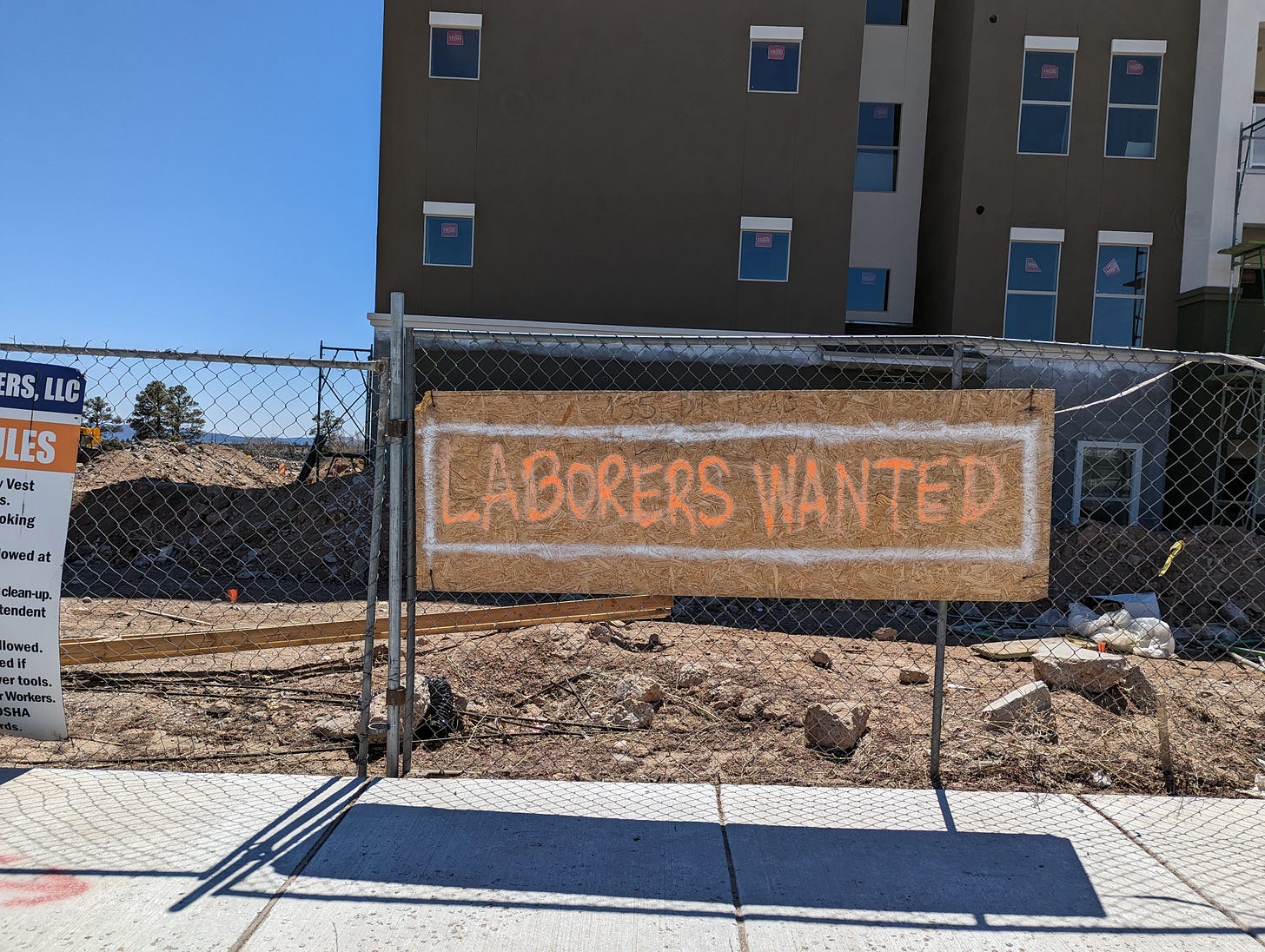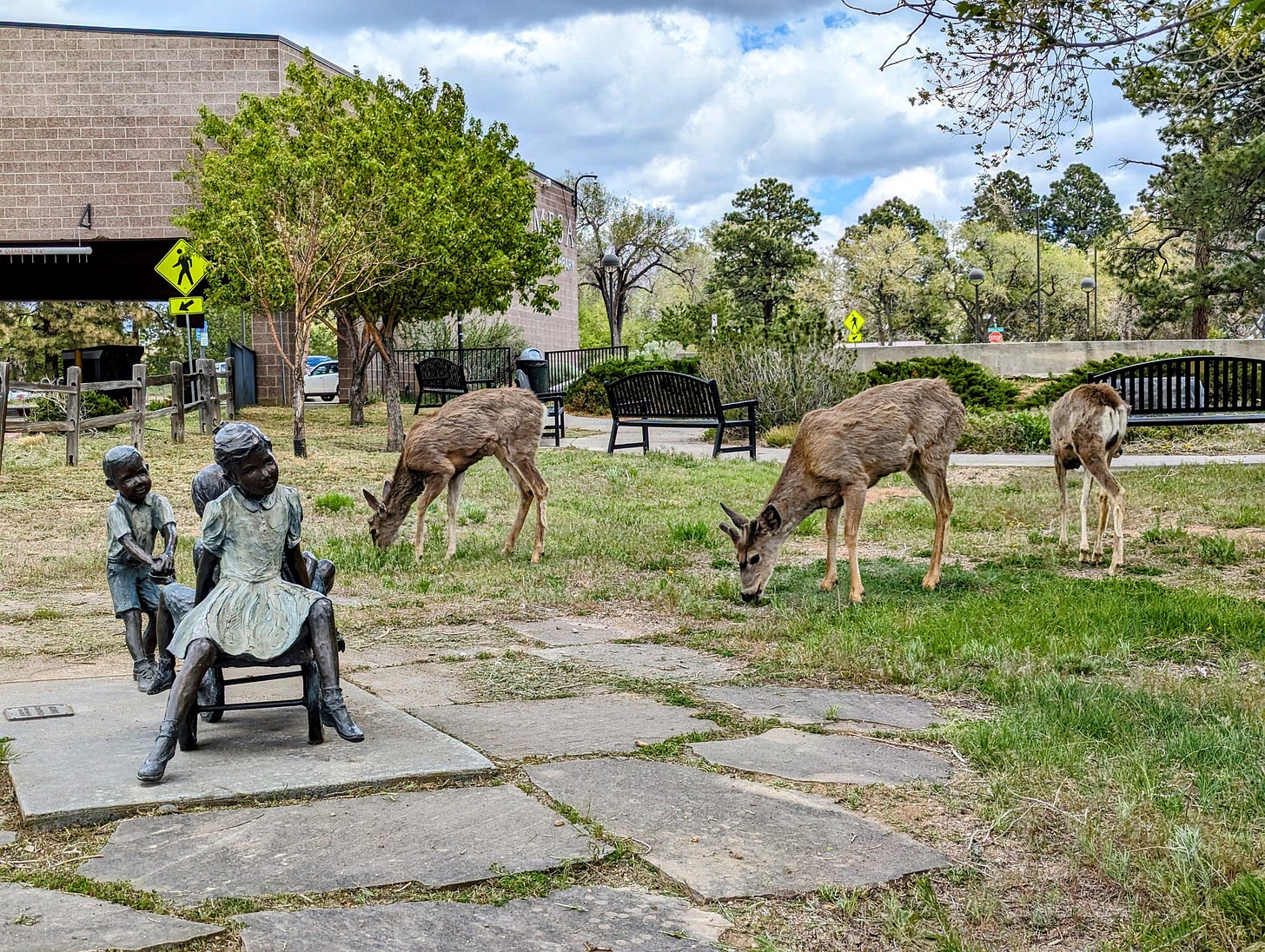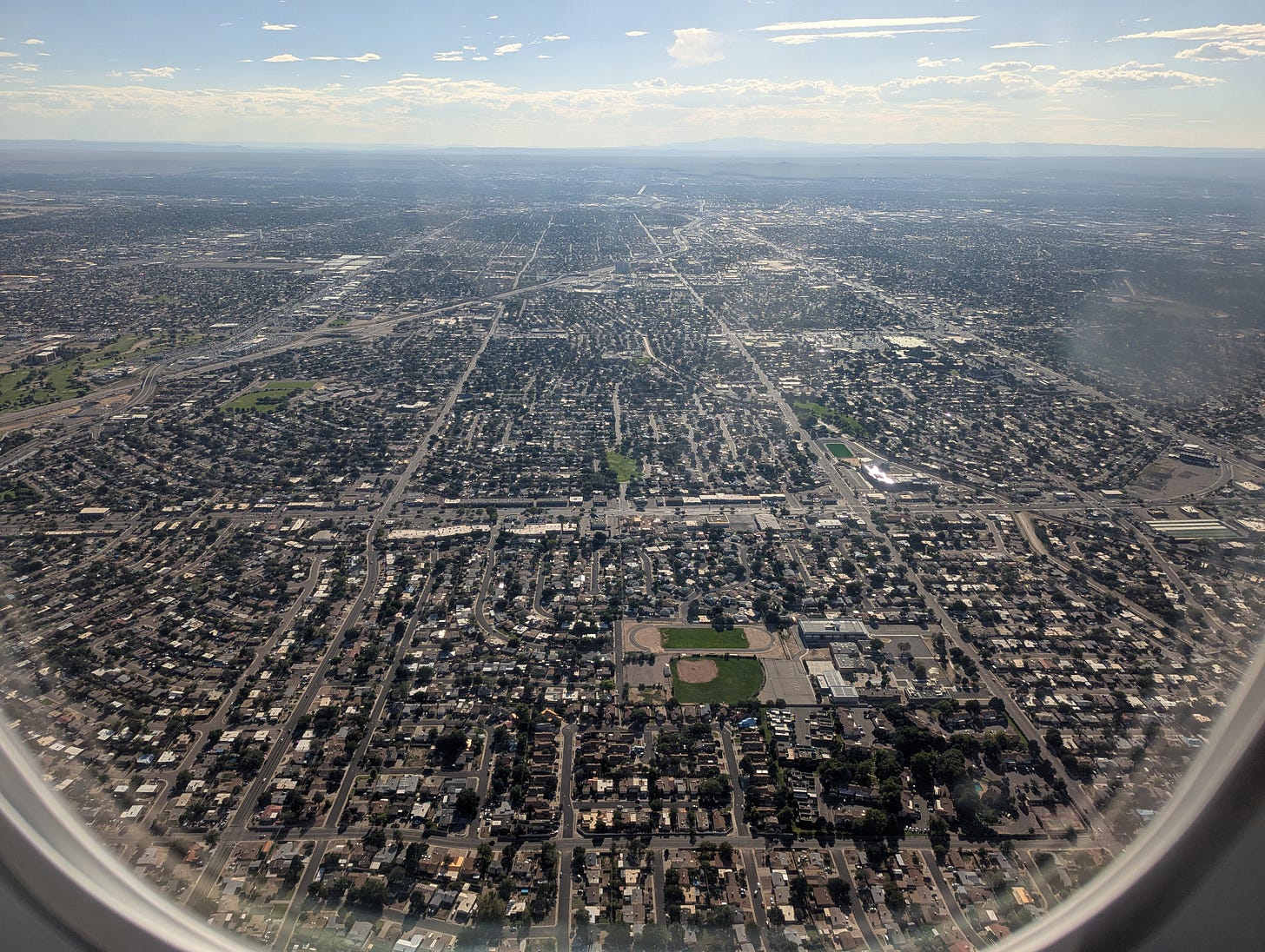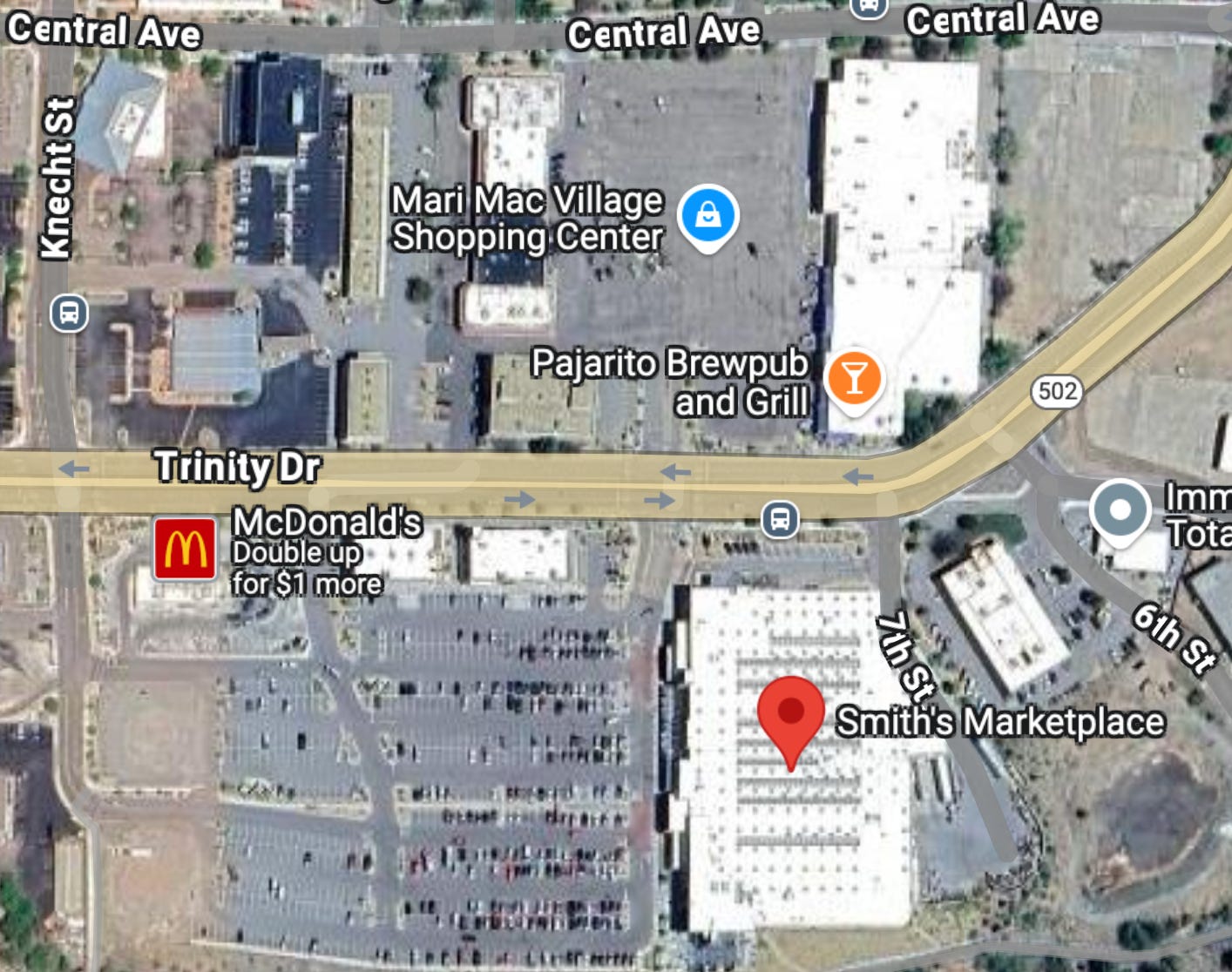Is the solution worse than the problem?
In Los Alamos, like a lot of places, many problems are getting between us and the new housing that we need to reduce greenhouse gas emissions. Some barriers we can do nothing about, like rising construction costs and high interest rates. This makes it all the more important that municipalities use the tools they do have at their disposal to move the needle.
Well-intentioned regulations, including some environmental ones, can create problems larger than their benefits. Research shows that regulations now account for over 40% of multifamily development costs nationwide. If our region adds green building mandates to the already crushing regulatory burden, it creates an obvious problem: The most eco-friendly homes on paper will deliver zero climate benefits if they are too expensive and complicated ever to get built.
We know what’s getting in the way. According to a presentation from Los Alamos County staff in 2023, parking mandates have contributed to some approved developments becoming too expensive to break ground—projects that received planning commission approval years ago remain vacant lots today. While I would love to see developers use leading-edge green building technologies, it seems to me that adding new expensive mandates to the existing pile of expensive mandates might be self-defeating. Any mandates that prevent a building from breaking ground will not only fail to solve our twinned climate and housing crisis, but will make it worse.
Sometimes, subtraction is better than addition. While bureaucrats enjoy adding layers of review upon layers of review and rules, this paperwork has added up over decades into an untenable thicket that’s stopping us (as a state) from building much of anything at all. I hope I don’t sound like a wild-eyed anarchist when I say, “I think we should maybe cut this paperwork pile in half?” And I hope nobody will accuse me of being a neoliberal shill if I say “I think outdated rules that are getting in the way of our climate goals should be eliminated.”

Speed is a green building standard
Emergencies demand different responses than non-emergencies. Fire trucks and ambulances get to move faster than regular vehicles. We need to move faster on housing. Every month of regulatory delay represents continued commuter emissions, more sprawl pressure on surrounding areas, and higher construction costs that make projects less viable. Environmental review processes originally designed to protect the environment have become the enemy of climate action.
California has a lesson for us. The California Environmental Quality Act (CEQA), passed in 1970 to protect the environment, has been weaponized to block the kind of housing most needed to combat climate change. In 2020 alone, CEQA lawsuits aimed to block nearly 48,000 approved housing units—almost half the state’s total housing production. A 60-home infill project in Palo Alto required 10 technical reports costing years and tens of thousands of dollars, while a sprawling 54-home development on 37 acres of wetlands in Gilroy sailed through with just six reports. Why, you ask? Simple answer: infill projects have wealthy neighbors who sue. Sprawl doesn’t.
In Minneapolis, similar environmental laws were used to halt the city’s upzoning plan, forcing developers to revert to car-dependent suburban patterns. A group in Berkeley sued under CEQA to block University of California students from attending classes, equating students with pollution. These laws create a perverse system where sprawling development into fire-prone forests and other delicate ecosystems gets to proceed with minimal scrutiny, while climate-friendly infill projects face years of delay and millions in studies. (“Infill” means “build within the existing footprint of a town.”)

Northern New Mexico risks falling into the same trap. New Mexico doesn’t have CEQA, of course, but it does have other regulatory tools that can be used to stop green infrastructure like housing. Recognizing this, our Democratic governor, Michelle Lujan Grisham, recently released a housing plan that specifically named the 1970 National Environmental Policy Act (NEPA) as a regulatory barrier that needs to be overcome, stating: “Congress should revisit NEPA requirements for all infill housing development on parcels outside sensitive or protected areas.”
Elected leaders who genuinely care about housing and the climate are slowly beginning to realize that while some environmental oversight is necessary, regulations are being misused to reward sprawl and punish infill development. In California, Gov. Gavin Newsom just passed a sweeping measure intended to stop people using CEQA against housing:
This isn’t just a budget. This is a budget that builds. It proves what’s possible when we govern with urgency, with clarity, and with a belief in abundance over scarcity.
In addition to the legislature, I thank the many housing, labor, and environmental leaders who heeded my call and came together around a common goal—to build more housing, faster and create strong affordable pathways for every Californian. - Gov. Newsom, June 2025
These leaders understand the urgency of the moment. The climate doesn’t care if your building materials are theoretically a little bit more sustainable, especially if nothing actually gets built. It cares enormously whether people drive 100 miles a day to get to work. Los Alamos’ 67% commuter workforce represents a massive, immediate opportunity for emissions reduction. Converting even half of these commuters to residents would eliminate millions of vehicle miles annually—a climate impact that eco-friendly building mandates would have to work hard to match.
The greenest building standards right now are “fast” and “dense.” Projects that increase housing supply, especially in core areas, deliver automatic climate benefits regardless of their energy efficiency ratings.
Efficiency is eco-friendly
Here’s a fact that may be hard for many residents in big single-family homes on landscaped lots to accept: Multifamily housing is more environmentally friendly than your standalone house with its lovely lawn and garden. Research shows that detached single-family homes use 64% more energy per occupant than attached and multifamily homes. Energy savings result from more efficient building space and shared walls that reduce heating and cooling demand.
Single-family homes on large lots—the only type of housing allowed on the majority of residential land—represent the worst possible choice for the environment*. These homes consume the most energy, use the most water, require the most infrastructure, and generate the most car-centered sprawl. The Manhattan Project scientists of the 1940s managed to achieve incredible breakthroughs while living in modest duplexes, quads, and apartments. Do today’s residents really require two-acre buffer zones to achieve similar output?
Every duplex converted to a single-family home, every townhome blocked by neighbors, every apartment project delayed by review processes has a climate impact. In planning meetings, we often hear from neighborhood defenders who ask that we allow 10 fewer homes, or add 5 more parking spaces, or make the building shorter. Ideally they want no housing at all, but if it must be built, please put it far away and please subtract some housing from it.
Because of the problem of concentrated costs and diffuse benefits, this attitude is understandable! Who among us wants to live next to the dust and disruption of a construction project? What we have to keep in mind, though, is that each housing unit we subtract from a project represents one more family forced to commute rather than live where they work.
(*Full disclosure: I myself live in a single-family home with a landscaped yard. Even for those who want to downsize to something more central and walkable with shared walls, there is not much choice! Zoning laws make denser housing mostly illegal in the US. I do not think people should feel guilty about living in single-family homes, but they should feel guilty if they try to shut down the existence of other kinds of homes.)
Smart standards vs. blocking standards
Of course I am not advocating we abandon all environmental standards. We don’t want to go back to the total development free-for-all that inspired Rachel Carson to write Silent Spring and got even Richard Dang Nixon to sign NEPA: Clearly, we need environmental protections that genuinely protect the environment and not some rich person’s view. Some green building features offer genuine win-wins. Energy-efficient HVAC systems and water heaters coincide with replacement cycles, creating market opportunities without mandates. All-electric appliances save money long-term. Induction stoves heat things faster and avoid indoor air pollution. New toilets are insanely more water-wise than old ones. Basic insulation and electric-ready infrastructure are cost-effective enough that builders often choose them without being forced to, and that will continue as technologies that make homes more energy- and water-efficient become cheaper.
The key distinction is between regulations that enhance housing production versus those that prevent it. Think of mandates like a tax on housing production. Light taxes—basic efficiency standards that pay for themselves—might be absorbed by the market. Heavy taxes—LEED certification, rooftop solar mandates—risk killing projects entirely.
Cities considering regulations should distinguish between those that prevent housing (parking mandates, minimum lot sizes, height restrictions, setbacks) and those that might improve it (cost-effective efficiency standards). The enemy isn’t environmental thoughtfulness, it’s the regulatory pile-on that makes projects financially impossible and keeps more people locked into long commutes.
Contradictory beliefs
Many people I know who consider themselves environmentalists hold contradictory views about climate and housing without realizing it:
“Housing is a human right!” versus “My house is the last house that should ever have been built”
“We should protect rivers and forests!” versus “I hate density—the only housing I support is single-family homes on one-acre lots”
“Driving is bad for the environment!” versus “New houses on the south side of Santa Fe will provide all the housing needs for Los Alamos, it’s fine, we don’t need to build anywhere else”
“I hate sitting in traffic!” versus “Zoning laws should keep housing and shops as far apart as possible”
“I feel so sorry for the wildlife, they were here first, we’ve stolen all their habitat!” versus “Nobody should live in a little shoebox, everyone deserves four walls of their own and ample privacy”

These contradictions exist because most of us over the age of 50 have been raised on problematic ideas that feel natural but don’t make logical sense together. The environmental movement of the 60s and 70s so successfully taught us that growth is bad that we stopped building anything. But we kept growing as a nation. From 1965 to 1990, U.S. population grew by roughly 29%, but housing starts remained virtually flat during that same span—meaning we built far less new housing than before. America continued to grow—demographically, socially, economically—but our capacity to build did not. That divergence has made houses scarcer, driven up rents, raised the cost of living, and entrenched sprawl. (Sprawl is, ironically, the very thing the environmental movement claimed to oppose.)
Stand up for climate, stand up for housing
If you’re an environmentalist in Taos, Santa Fe, or Los Alamos, you should keep fighting for your values. Fight for the solar project at Rancho Viejo, retrofit your home to make it all-electric, drive your EV, take the bus or bike to work, join the Citizens Climate Lobby: keep doing all that, it’s important work! But also, consider showing up to support housing at every opportunity. Remember who is showing up at housing meetings and be that lone voice that says “yes” to townhomes. Advocate for policies that make housing less expensive to build. These are climate actions as important as electrifying buildings.
The practical path forward involves four key changes:
Eliminate parking mandates. Current parking mandates force expensive infrastructure that enables car-dependency while making projects financially unviable. Los Alamos’ many community plans have long signaled support for this approach. In Santa Fe, housing and climate advocates have been asking for this change for years. We’re just waiting for local politicians to make it so.
Allow missing middle housing by right. Duplexes, triplexes, and small apartments should be permitted without discretionary review in all residential areas.
Streamline approvals for infill development. Projects that increase housing supply in walkable areas deliver automatic climate benefits regardless of energy efficiency ratings.
Incentivize rather than mandate green features. Where environmental standards pay off, offer bonuses to offset upfront costs rather than requirements that kill projects.
Choose practical action over idealization
Northern New Mexico stands at a crossroads. It can choose between eco-perfect unicorn housing that never materializes … and real housing abundance that cuts emissions. Between big-house-on-big-lot mandates that force commuting … and the on-the-ground climate benefits of people living where they work.
Housing supply is green infrastructure. We need more of it, fast. The parking lots are sitting there, getting hotter, waiting for an answer.
See part 1 here




Outstanding piece.
We have far too many NIMBYs, not just in Los Alamos, but across the country. In Los Alamos, however, we have too many people who are unwilling to make any changes, whatsoever, no matter how small, to improve the quality of life for future residents. Comments online about how new residents need to assimilate and not try to change things, in addition to rhyming with the racist tropes of anti-immigrant sentiment, are so ironic when you consider how many workers at LANL probably relocated here. That was and is the quite literal intent of the lab. But what's most ironic about it is that we've actually seen a decline in quality of life: rising housing costs, fewer businesses, more traffic. Which then raises the question of what, exactly, people are trying to preserve in the first place.
"In 2020 alone, CEQA lawsuits aimed to block nearly 48,000 approved housing units—almost half the state’s total housing production." 🤯